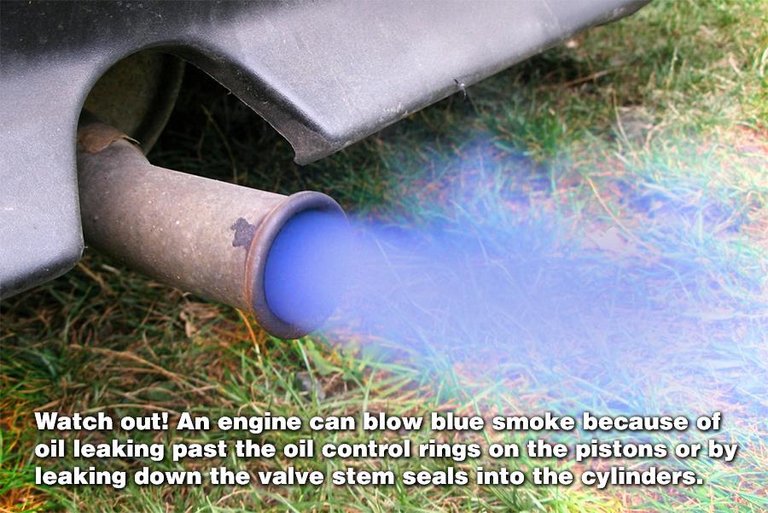There are a number of reasons why engines will blow blue smoke. Assuming the correct oil is used, the main culprit is oil burning in the cylinders. It only takes a tiny amount of oil to produce blue smoke from the exhaust. Some engines have been known to continue running strong for thousands of kilometres even burning small amounts of oil. Once an engine develops an appetite for oil, often the only way to rectify the problem is to repair the failed internal components.

Oil can make its way into the cylinders by either passing directly into the combustion chamber or entering through the intake plumbing. An engine that’s breathing heavily or has a blocked air filter will use oil through the positive crankcase vent (PCV) tube. The PCV is the pipe running from the rocker cover to the intake plumbing. This is often referred to as blow-by, because it’s a result of compression making its way passed the piston rings in turn pressurising the sump. This forces oil to mist out of the PCV and be drawn into the engine.
An easy way to pick if an engine has excessive blow-by is to carefully open the oil filler cap while it’s running. If you feel excessive pressure escaping from the engine filler hole and the engine turns into a steam train, it’s likely to need a rebuild very shortly. An engine can also blow blue smoke as a result of oil leaking past the oil control rings on the pistons or by leaking down the valve stem seals into the cylinders.
Always monitor your engine oil consumption between services, as an engine with good compression can still use oil but not blow visible blue smoke. Blue smoke is a hard one to spot as diesel fuel is essentially a form of oil. The thing is, good compression will allow the engine to burn oil cleanly in small volumes and go unnoticed out of the exhaust pipe. It’s an easy trap to fall into with high-compression diesel engines.
Hi! I am a robot. I just upvoted you! I found similar content that readers might be interested in:
http://www.cruisersforum.com/forums/archive/index.php/t-167342.html